#lithium battery solar charge controller
Text
Designed for Rugged Usage
SMD Mosfet based design
Power busbars for low drop current paths
Supports Automotive or industrial grade components depending on requirement
for more info Please visit
#30 amp mppt solar charge controller#solar inverter with mppt charge controller#40 amp solar charge controller#12 volt solar charge controller#lithium battery solar charge controller#solar plate charger#12 volt solar battery charger kit#24v solar charge controller#20a solar charge controller#solar lithium battery charger#best mppt solar charge controller#solar charger module#panel charger#best mppt charge controller#smart solar charge controller#30a solar charge controller
0 notes
Text
.
#making an automatic watering system w arduino#have it flashed to trigger the relays already for a variable amt of time#which at the end of the day is basically all it takes + scheduling#but now ofc its growing its own potential spinoffs...#i wanna add a BLE module to be able to control the scheduling from like a phone#which will then also require some minimal data storage...#then the big question is rly how to power it...#its probably gonna b within an extension cord length from the back door but dont wanna deal w unplugging it for rain etc#so maybe like a weatherproof case w solar & a battery? but then ive gotta figure out the best way of battery-izing it....#lithium seems like an overkill unless its like maybe lifepo#& generally prefer lifepo over cobalt etc for safety#but then ive gotta figure out how to add a charging circuit to it....#anyway then once i have the app controlling scheduling i can also start integrating it into my home organizing/etc app?#& ideally be able to like have a couple nodes like that?#ah fuck also gotta figure out a case#maybe just start w a nice n dirty project box til i eventually make a custom enclosure/PCB backplate for the assemblage#maybe just put it next to our sprinkler box & just make the tubes longer so i dont have to fuck around w batteries for this?#starting to convince myself of that idea tbh#rn the relayboard has 4 guys...might b better to just have this as the master instead of having nodes so just get more relays#centralize & dont have to deal w synching headaches#maybe get like a multiplexer? not like this would necessarily need multiple at a time 1 at a time wouldnt b the end of the world#& i have some cheap moisture sensors but dont rly trust em tbh#esp w plants i intend to eat#eventually tho maybe link some sensors into the system#tho weather alone is probably enough to figure out#oh! huh how would i do that....#dont wanna have a whole ass wifi connection on the arduino#or like parsing web results on there...#& i dont rly wanna only know when connecting to my phone...#so that seems to point towards some client that checks the weather prediction like once a day & sends that/consequences to arduino?
21 notes
·
View notes
Text
How to charge a small 12v battery?
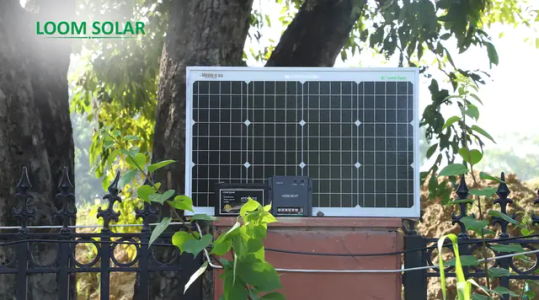
Utilizing solar panels to charge batteries is an eco-friendly choice, harnessing renewable energy. Yet, to initiate this, installing a charge controller becomes essential. This controller manages the voltage flow from the solar panel to the battery. Without it, during sunny spells, the solar panel might generate excess energy that can overwhelm and harm the battery. Fortunately, setting up a charge controller is a straightforward procedure, enabling you to efficiently charge your batteries.
youtube
Charging a small 12-volt battery requires a suitable charger and a few basic steps:
Safety Precautions: Always wear safety goggles and gloves when working with batteries. Ensure you are in a well-ventilated area, away from open flames or sparks.
Select the Right Charger: Choose a charger specifically designed for 12-volt batteries. The charger should match the type of battery you have (e.g., lead-acid, AGM, gel-cell) and its capacity in ampere-hours (Ah).
Prepare the Battery: Ensure the battery is clean and free of any corrosion on the terminals. If corrosion is present, clean it using a mixture of baking soda and water.
Connect the Charger: Connect the positive (red) clamp from the charger to the positive terminal of the battery (marked with a "+" sign) and the negative (black) clamp to the negative terminal (marked with a "-" sign).
Charging Time: The time it takes to charge the battery depends on its capacity and its current state of charge. A completely discharged battery will take longer to charge than one partially charged.
Charge Completion: Most modern chargers have features like float or maintenance mode, which keep the battery topped off without overcharging. When the charger indicates that the battery is fully charged, disconnect the charger.
Post-Charging Check: Measure the battery voltage with a multimeter to ensure it reaches the desired voltage level, typically around 12.6-12.8 volts for a fully charged 12-volt battery.
Regularly maintaining and charging your small 12v lithium-ion battery when it's not in use helps prolong its lifespan and ensures it's ready when needed. These are some basic steps for charging a small 12v battery. You have to also purchase a charge controller to charge a battery.
0 notes
Text
Build a Handy 12-Volt Solar Generator with LiFePo4 Batteries
Building a Solar Generator
Batteries
“Winston” LiFePo4 cell with hardware
Previously, I wrote about Upgrading a Solar Power System and mentioned a cache of new Lithium Iron Phosphate (LiFePo4) cells. The “ThunderSky Winston” cells had come from a Segway repair operation and were new. A little looking around the ‘net revealed they were still available from GWL Group. With a capacity of 60 Amp…

View On WordPress
#battery#bms#build#bus bar#charge#controller#DIY#generator#howto#inverter#iron#lifepo#lithium#management#phosphate#radiob#solar#storage#system#wb0mmc
0 notes
Text
Green energy is in its heyday.
Renewable energy sources now account for 22% of the nation’s electricity, and solar has skyrocketed eight times over in the last decade. This spring in California, wind, water, and solar power energy sources exceeded expectations, accounting for an average of 61.5 percent of the state's electricity demand across 52 days.
But green energy has a lithium problem. Lithium batteries control more than 90% of the global grid battery storage market.
That’s not just cell phones, laptops, electric toothbrushes, and tools. Scooters, e-bikes, hybrids, and electric vehicles all rely on rechargeable lithium batteries to get going.
Fortunately, this past week, Natron Energy launched its first-ever commercial-scale production of sodium-ion batteries in the U.S.
“Sodium-ion batteries offer a unique alternative to lithium-ion, with higher power, faster recharge, longer lifecycle and a completely safe and stable chemistry,” said Colin Wessells — Natron Founder and Co-CEO — at the kick-off event in Michigan.
The new sodium-ion batteries charge and discharge at rates 10 times faster than lithium-ion, with an estimated lifespan of 50,000 cycles.
Wessells said that using sodium as a primary mineral alternative eliminates industry-wide issues of worker negligence, geopolitical disruption, and the “questionable environmental impacts” inextricably linked to lithium mining.
“The electrification of our economy is dependent on the development and production of new, innovative energy storage solutions,” Wessells said.
Why are sodium batteries a better alternative to lithium?
The birth and death cycle of lithium is shadowed in environmental destruction. The process of extracting lithium pollutes the water, air, and soil, and when it’s eventually discarded, the flammable batteries are prone to bursting into flames and burning out in landfills.
There’s also a human cost. Lithium-ion materials like cobalt and nickel are not only harder to source and procure, but their supply chains are also overwhelmingly attributed to hazardous working conditions and child labor law violations.
Sodium, on the other hand, is estimated to be 1,000 times more abundant in the earth’s crust than lithium.
“Unlike lithium, sodium can be produced from an abundant material: salt,” engineer Casey Crownhart wrote in the MIT Technology Review. “Because the raw ingredients are cheap and widely available, there’s potential for sodium-ion batteries to be significantly less expensive than their lithium-ion counterparts if more companies start making more of them.”
What will these batteries be used for?
Right now, Natron has its focus set on AI models and data storage centers, which consume hefty amounts of energy. In 2023, the MIT Technology Review reported that one AI model can emit more than 626,00 pounds of carbon dioxide equivalent.
“We expect our battery solutions will be used to power the explosive growth in data centers used for Artificial Intelligence,” said Wendell Brooks, co-CEO of Natron.
“With the start of commercial-scale production here in Michigan, we are well-positioned to capitalize on the growing demand for efficient, safe, and reliable battery energy storage.”
The fast-charging energy alternative also has limitless potential on a consumer level, and Natron is eying telecommunications and EV fast-charging once it begins servicing AI data storage centers in June.
On a larger scale, sodium-ion batteries could radically change the manufacturing and production sectors — from housing energy to lower electricity costs in warehouses, to charging backup stations and powering electric vehicles, trucks, forklifts, and so on.
“I founded Natron because we saw climate change as the defining problem of our time,” Wessells said. “We believe batteries have a role to play.”
-via GoodGoodGood, May 3, 2024
--
Note: I wanted to make sure this was legit (scientifically and in general), and I'm happy to report that it really is! x, x, x, x
#batteries#lithium#lithium ion batteries#lithium battery#sodium#clean energy#energy storage#electrochemistry#lithium mining#pollution#human rights#displacement#forced labor#child labor#mining#good news#hope
2K notes
·
View notes
Text
20 Amp Solar Charge Controller
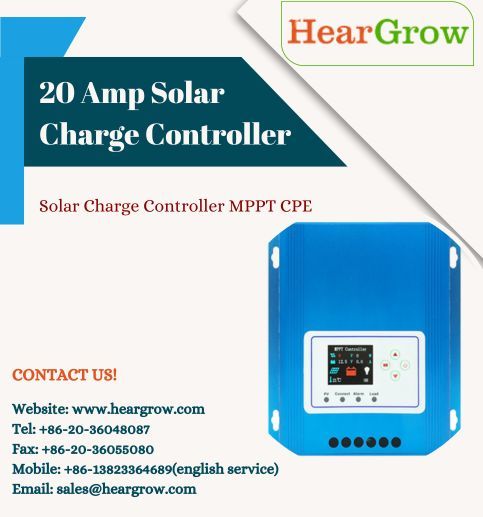
Our 20 Amp Solar Charge Controller is an essential component for maximizing the efficiency and lifespan of your solar energy system. Its advanced technology prevents overcharging and discharge and ensures optimal energy transfer. With our 20 Amp Solar Charge Controller, you can rest assured that your solar energy system will always perform at its best, providing you with reliable and efficient power.
1 note
·
View note
Text
Neexgent Hybrid Off Grid Solar Inverter 5kw Inverter High Frequency Solar Power Inverter
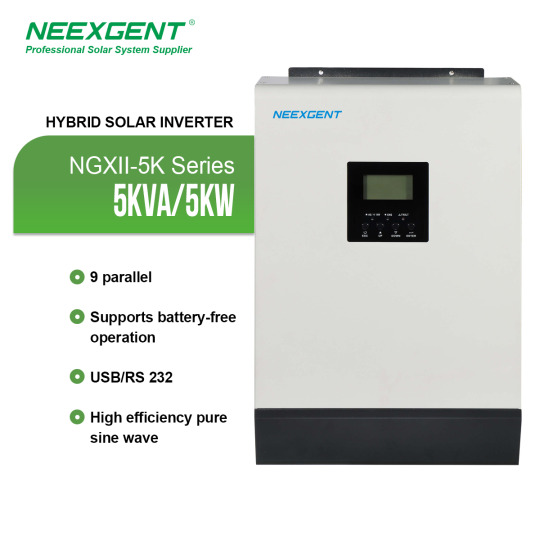
#Neexgent Hybrid Solar Power Inverter Solar Charge Controller Off Grid Inverter 5kw Inverter#solar panels#solar energy#solar system#solar power#solar panel#off grid solar inverter#off grid inverter#hybrid solar inverter#grid tie inverter#solar inverter#hybrid inverter#lithium ion batteries#lithium ion battery#lithium battery#rechargeable battery#battery#neexgent#5.5kw hybrid solar inverter#5kw solar inverter#5kw solar power kit#5kw hybrid solar system#5kw off grid solar system
0 notes
Text
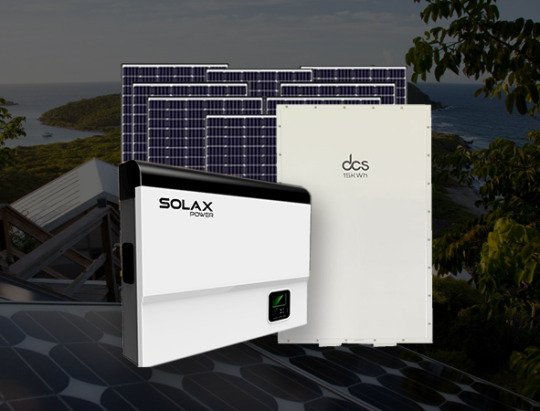
Deep Cycle Systems, one of the most trusted companies in this industry, offers reliable Solar hybrid power systems at a reasonable price.
0 notes
Text
DA lithium battery for Eco Friendly RV
You’re in the right place if needed a much more Eco-friendly RV.
You wouldn’t throw the ice cream in the living room, Nor Key scratching the brand new car. We knows how to take good care of what we concerns. There is no different with our own planet, right? For those adventurers out there who want to preserve nature while enjoying RV life, here are our favorite eco-friendly RV tips.
Your Eco-Friendly RV – Tips & Tricks
Yes, you can indulge your RV wanderlust and go green at the same time. Here’s how:
Reduce on Fossil Fuels
You probably know that RVs are heavy on fuel. This is neither environmentally friendly nor good for the wallet. Since the average diesel RV only gets 8-14 miles per gallon, it’s imperative to maximize fuel efficiency. Try these RV tips to reduce gas:
Go for a smaller vehicle. If you’re in the market for an RV and want to minimize gas consumption, opt for a smaller Class C motorhome, or even a Class B van. The bigger the rig, the more gasoline it consumes.
Stay up-to-date with maintenance. Small tweaks can make a huge difference. For example, keeping your tires properly inflated can improve fuel consumption by up to 3%.
Change to bio–diesel fuel. Bio-diesel is a renewable, biodegradable fuel made from animal fats, vegetable oils, or recycled restaurant grease. Not currently available at all gas stations. But it’s growing in popularity, and you can use this handy online tool to find alternative gas stations near you.
Press the accelerator lightly. Slow down and enjoy the scenic route. By accelerating less and maintaining a moderate speed, you save fuel. The best speed for an RV is 55 to 60 mph.
Travel light. Only bring travel essentials. Dead weight will slow your RV down and cost you more fuel.
Pro Tip: Switch to lithium RV batteries and reduce hitch weight by up to 70%. The weight of ion lithium RV battery is 1/2 of lead-acid battery with the same capacity.
Charge Your Gadgets With The Power Of The Sun
Most of us use a ton of gadgets every day. Think cell phones, laptops, cameras, and more. Since they all need to be charged, why not reduce energy consumption and use solar energy? After all, solar energy is a completely renewable energy source.
By calculating and armed with solar panels, inverter&controller, most important with our stable and security DA lithium battery pack, You are allowed to charge your gadgets from anywhere. Whether you’re staying in your RV or backpacking in the mountains for the weekend, it never hurts to have solar power at your disposal. Even better, charging your devices with solar power is better for the environment.
Try Your Hand At Dry Camping Or Boondocking
Dry camping and boondocking are some of the best ways to make your RV eco friendly. They are also fun! If you can ditch the connection for a few nights, you’ll be rewarded with open spaces and starry skies, especially for the rednecks out there.
Just because you’re off the grid doesn’t mean you’re necessarily going to be uncomfortable. With high-efficiency household batteries, you can still power essentials like water systems, lighting, and ceiling fans. But not just any battery will do. You need a reliable and energy-efficient power supply to power your weekends.
With our trusty 12V LiFePO4 battery, you can forget about electrical connections and enjoy nature.
Pro Tip: Use the 12V lithium battery (series or parallel connection) to charge and power your lights, fans and pumps, even when you’re in the middle of nowhere. Lithium is the best RV battery ever for boondocking as it is efficient, reliable and environmentally safe.
Switch to Smart, Energy Efficient Lithium Batteries
You can make a huge leap toward Eco friendly RVing with this one small step: switch to lithium RV batteries. Here’s why:
Lithium is toxin-free. While lead-acid batteries may be the cheapest option for an RV, they’re not the greenest. They contain harmful substances, including sulfuric acid and lead. This is why they require maintenance and must be stored properly to prevent spills from contaminating the environment. Lithium batteries are a safer, smarter, environmentally friendly RV alternative. They are non-toxic, non-spillable and recyclable. You can even store them indoors.
Lithium is smart. Lithium batteries are smart batteries because they have a battery management system(BMS) that prevents overcharging (and subsequent damage). They could also access to your phone via Bluetooth. With a few taps, you can see exactly how much energy is left and the statements of every single cell’s healthy.
Lithium is more efficient. Lithium batteries support charge @100% efficiently, while lead-acid batteries charge @85 % efficiently. You can use a smaller and less expensive solar setup to charge lithium than you can charge a similar sized lead-acid battery. Because of their efficiency, lithium battery packs run out of power much less frequently. This is important when you need to use limited power wisely, such as when you’re boondocking!
Quick Tips for Eco Friendly RV Living
Cutting down on fossil fuel use, staying off the grid, harnessing solar power, and switching to smart batteries are all major ways to turn your home-on-the-go into an Eco friendly RV. But here are a few more RV tips to help you go even greener:
Use enzyme-based tank cleaners instead of chemical-based cleaners for your RV toilet.
Switch out basic bulbs and replace them with energy-saving LED lights.
Use reusable, lightweight plates and utensils instead of disposable plastic and polyfoam.
Conserve water by bringing your own water filtration system and using the water around you. Install a water-saving shower head to reduce waste.
Leave no trace! Take everything you brought to the campsite with you when you leave.
3 notes
·
View notes
Text
Sirens Market Research by Key players, Type and Application, Future Growth Forecast 2022 to 2032
In 2022, the global sirens market is expected to be worth US$ 170.1 million. The siren market is expected to reach US$ 244.0 million by 2032, growing at a 3.7% CAGR.
The use of sirens is expected to increase, whether for announcements or on emergency vehicles such as ambulances, police cars, and fire trucks. A siren is a loud warning system that alerts people to potentially dangerous situations as they happen.
Rapidly increasing threats and accidents have resulted in more casualties and missed business opportunities in developing economies. Demand for sirens is expected to rise during the forecast period as more people use security solutions.
As a result of rising threats and accidents in developing economies, the number of victims and lost business opportunities has rapidly increased. Adopting security solutions, such as sirens, is an effective way to deal with these challenges. Long-range sirens are used in mining and industrial applications, whereas motorised sirens are used in home security. Hand-operated sirens are used when there is no power or when a backup is required.
Some additional features of sirens include a solar panel upgrade system to keep the batteries charged and a number of digital communication methods, including Ethernet, satellite, IP, fiber optic and others. Sirens have conformal coatings on their electronics, which help protect them against harsh environments. Some of the systems are made in such a way that they can be expanded or scaled depending on future capabilities.
Omni-directional sirens can be used in areas of high noise levels and those with large population densities as they provide a greater area of coverage. Sirens have external controls with triggers, which can be customized according to needs. The lightening types of sirens include bulb revolving, LED flashing and xenon lamp strobe. The loud speakers in sirens are adopted from latest piezoelectric ceramic technology.
Get a Sample Copy of this Report @
https://www.futuremarketinsights.com/reports/sample/rep-gb-4274
Other sirens are hydraulic or air driven and mostly find applications in plants and factories. Lithium batteries have replaced alkaline batteries in sirens now, since lithium batteries need not be replaced for several years. Modern sirens use latest technologies and find applications in civil defense, emergency vehicles, security systems and others. Typically, sirens are made of stainless steel, aluminum or UV stabilized polycarbonate to avoid corrosion and are equipped with protection cages. An LED flashing siren has a light source with a semi-permanent lifespan and it is used in places where bulb replacement is a problem.
Region-wise Outlook
In the global sirens market, the dominant share is held by the U.S., India, China, Japan, Australia, Germany, Singapore and the UAE. This can be attributed to the demand for security solutions in developed as well as developing economies.
The regional analysis includes:
North America (U.S., Canada)
Latin America (Mexico. Brazil)
Western Europe (Germany, Italy, France, U.K, Spain)
Eastern Europe (Poland, Russia)
Asia-Pacific (China, India, ASEAN, Australia & New Zealand)
Japan
The Middle East and Africa (GCC Countries, S. Africa, Northern Africa)
The report is a compilation of first-hand information, qualitative and quantitative assessment by industry analysts, inputs from industry experts and industry participants across the value chain. The report provides in-depth analysis of parent market trends, macro-economic indicators and governing factors along with market attractiveness as per segments. The report also maps the qualitative impact of various market factors on market segments and geographies.
Market Participants
Some of the key market participants identified in the global siren market are Acoustic Technology Inc., Sentry Siren Inc., MA Safety Signal Co. Ltd, Whelen Engineering Co. Inc., Federal Signal Corporation, B & M Siren Manufacturing Co., Projects Unlimited Inc., Phoenix Contact, Mallory Sonalert Products and Qlight USA Inc.
Rising population and rapid urbanization have led to an increase in demand for security solutions. The need for implementation of security has paved way for the use of electronic equipment on a large scale globally, which in turn has created opportunities for the global sirens market. As these products are durable with a high voltage capacity and easy to install, they find high selling propositions. Characteristics and properties of electronic and pneumatic equipment play a vital role in security solutions, thereby driving the global sirens market with a rise in diverse end-user applications, such as industrial warning systems, community warning systems, campus alert systems and military mass warning systems.
Report Highlights:
Detailed overview of parent market
Changing market dynamics in the industry
In-depth Polishing / Lapping Film market segmentation
Historical, current and projected market size in terms of volume and value
Recent industry trends and developments
Competitive landscape
Strategies of key players and products offered
Potential and niche segments, geographical regions exhibiting promising growth
A neutral perspective on market performance
Must-have information for market players to sustain and enhance their market footprint.
Browse Detailed Summary of Research Report with TOC @
https://www.futuremarketinsights.com/reports/sirens-market
Key Segments
Product Type:
Electronic
Electro-mechanical
Rotating
Single/dual toned
Omnidirectional
By Application:
Civil defense
Industrial signaling
Emergency vehicles
Home/vehicle safety
Security/warning systems
Military use
Others
By Installation Type:
Wall mounting
Self-standing
Water proof connector
By Regions:
North America
Europe
Asia Pacific
Latin America
MEA
2 notes
·
View notes
Text
Future Trends in Electric Scooters
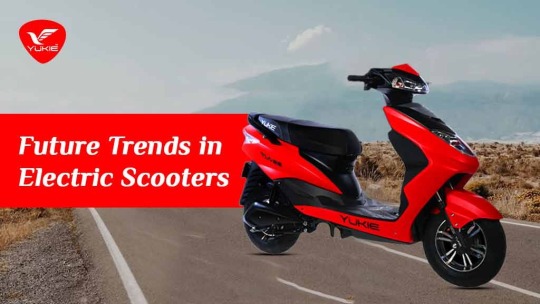
In recent years, electric scooters have emerged as a popular and sustainable mode of urban
transportation. With advancements in battery technology, motor efficiency, and design
innovation, electric scooters are poised to revolutionise the way we commute and explore
our cities. In this blog, we’ll delve into the exciting future trends shaping the electric scooter
industry and envision how these innovations will enhance our mobility experience.
1. Increased Range and Battery Efficiency
One of the most significant trends driving the evolution of electric scooters is the
improvement in battery technology, leading to increased range and efficiency. As battery
technology continues to advance, electric scooters are becoming capable of traveling longer
distances on a single charge. Manufacturers are investing in high-capacity lithium-ion
batteries and implementing energy-efficient motor systems to extend the range of electric
scooters, making them a viable option for longer commutes and urban exploration.
2. Lightweight and Foldable Designs
Portability and convenience are key considerations for urban commuters, and future electric
scooters are expected to feature lightweight and foldable designs for easy storage and
transport. Manufacturers are incorporating lightweight materials such as carbon fiber and
aluminum alloys to reduce the weight of electric scooters without compromising on durability.
Additionally, foldable designs allow electric scooters to be conveniently carried on public
transportation or stored in small spaces, making them ideal for urban dwellers with limited
storage space.
3. Smart Connectivity and IoT Integration
The integration of smart connectivity and Internet of Things (IoT) technology is another
exciting trend shaping the future of electric scooters. Manufacturers are equipping electric
scooters with built-in GPS navigation, smartphone connectivity, and app-based features to
enhance the user experience. Riders can track their route, monitor battery status, and
receive real-time updates on traffic conditions and weather forecasts through dedicated
mobile apps. Additionally, IoT integration enables remote diagnostics and over-the-air
software updates, ensuring that electric scooters remain up-to-date and optimized for
performance.
4. Enhanced Safety Features
Safety is paramount in urban transportation, and future electric scooters are expected to
incorporate advanced safety features to protect riders and pedestrians. Manufacturers are
integrating technologies such as anti-lock braking systems (ABS), traction control, and
collision detection sensors to enhance stability and prevent accidents. Additionally, LED
lighting systems and reflective materials improve visibility in low-light conditions, increasing
awareness and reducing the risk of collisions. With safety being a top priority, electric
scooters are evolving to provide a secure and reliable mode of transportation for riders of all
skill levels.
5. Sustainable Materials and Eco-Friendly Manufacturing
As environmental consciousness grows, manufacturers are focusing on sustainability and
eco-friendly manufacturing practices in the production of electric scooters. Future electric
scooters are expected to feature recycled and renewable materials, as well as
environmentally friendly manufacturing processes to minimize their carbon footprint.
Additionally, manufacturers are exploring alternative energy sources such as solar and
kinetic energy harvesting to power electric scooters, further reducing their environmental
impact and promoting sustainable mobility solutions.
6. Urban Infrastructure Integration
The integration of electric scooters into existing urban infrastructure is another trend that will
shape the future of urban mobility. Cities are investing in dedicated bike lanes, charging
stations, and parking facilities to accommodate the growing popularity of electric scooters
and other micro-mobility devices. Additionally, urban planners are incorporating electric
scooter-sharing programs into public transportation networks to provide commuters with
convenient and flexible last-mile connectivity options. By integrating electric scooters into
urban infrastructure, cities can promote sustainable transportation alternatives and reduce
congestion and pollution.
7. Personalization and Customization Options
Personalization and customization options are becoming increasingly important for electric
scooter enthusiasts looking to express their individuality and style. Manufacturers are
offering a wide range of color choices, accessories, and customization options to cater to
diverse preferences and tastes. From customizable LED lighting to interchangeable panels
and decals, riders can personalize their electric scooters to reflect their personality and
lifestyle, creating a unique and distinctive riding experience.
8. Autonomous and Self-Driving Features
Looking further into the future, autonomous and self-driving electric scooters represent a
futuristic trend that holds the potential to transform urban transportation. Manufacturers and
technology companies are exploring autonomous navigation systems, artificial intelligence
algorithms, and sensor technologies to enable self-driving electric scooters that can navigate
city streets safely and efficiently. While still in the early stages of development, autonomous
electric scooters have the potential to revolutionize urban mobility by providing on-demand
transportation services that are convenient, cost-effective, and environmentally friendly.
In conclusion, the future of electric scooters is bright and promising, with exciting trends
shaping the evolution of urban mobility. From increased range and battery efficiency to
lightweight and foldable designs, smart connectivity, enhanced safety features, and
sustainable manufacturing practices, electric scooters are poised to revolutionize the way we
commute and explore our cities. As technology continues to advance and urbanization
accelerates, electric scooters will play an increasingly important role in providing convenient,
efficient, and eco-friendly transportation solutions for urban dwellers around the world.
#best electric scooter#electric scooter#buy electric scooter#best electric scooter company in india#electric scooter dealership#electric vehicles#new electric scooter
0 notes
Text
Designed for Rugged Usage
SMD Mosfet based design
Power busbars for low drop current paths
Supports Automotive or industrial grade components depending on requirement
for more info please visit :- https://amberroot.com/ev-drives/
#30 amp mppt solar charge controller#solar inverter with mppt charge controller#40 amp solar charge controller#12 volt solar charge controller#lithium battery solar charge controller#solar plate charger#12 volt solar battery charger kit#24v solar charge controller#20a solar charge controller#solar lithium battery charger#best mppt solar charge controller#solar charger module#panel charger#best mppt charge controller#smart solar charge controller#30a solar charge controller
0 notes
Text
How do I safely charge my Lifepo4 battery?
Lithium iron phosphate (LiFePO4) batteries are popular for their high energy density and long cycle life. To ensure the safety and optimal performance of LiFePO4 batteries, it is critical to follow proper charging methods and guidelines.
This paper discusses charging methods, and safety tips for charging LiFePO4 batteries.
LiFePO4 Battery charging methods
In this section, we'll take an in-depth look at the best method of charging LiFePO4 batteries. Whichever charging method you choose, it is critical to confirm compatibility between your chosen charger and your LiFePO4 battery. This will ensure optimal performance, longevity and safety during charging.
Charge with solar energy
Charging LiFePO4 batteries with solar energy is a sustainable and environmentally friendly method. This method utilises a solar charge controller that efficiently manages the energy generated by the solar panels and regulates the charging process to ensure optimal power delivery to the LiFePO4 battery. This application is ideal for off-grid setups, remote locations and environmentally conscious energy solutions.
Charge with AC power source
Charging LiFePO4 batteries with AC power is versatile and reliable. In order to optimise the use of AC power for charging LiFePO4 batteries, a hybrid inverter is recommended. This type of inverter includes, in addition to the integrated solar charge controller, an AC charger that can charge the battery from both the generator and the grid. This approach is suitable for both grid-connected and standby power systems, providing flexible charging options.
Tips for charging LiFePO4 safely
Tips for charging lifepo4 in parallel
Make sure the batteries are of the same brand, type and size.
When connecting LiFePO4 batteries in parallel, please make sure that the voltage of each battery is within 0.1V before connecting them in parallel.
The difference in internal resistance between any two batteries is less than 0.05 Ω. Make sure that all cables and connectors are of the same length and size to ensure that the internal connections have the same resistance.
When charging batteries in parallel, the solar charging current is halved and the maximum charging capacity is doubled. For example, if two 48V 100Ah batteries are connected in parallel, the maximum charging current of each battery is 50 A. In this configuration, the total charging current of the combined battery pack can be up to 100 A. Assuming that the State of Charge (SOC) of the two batteries is the same, the effective charging current of each battery pack will be 50A.
Tips for charging lifepo4 in serie
Before charging in series, please make sure that each battery is of the same type, brand and capacity, otherwise it will lead to an imbalance in voltage between the batteries, resulting in over- or under-charging and affecting the performance and life of the batteries.
When connecting batteries in series, please ensure that the voltage between each battery is within 50mV (0.05V) before connecting them in parallel. This will limit the chances of an imbalance between the cells. If your cells become unbalanced and the voltage of any cell differs by more than 50mV (0.05V) from the voltage of another cell in the group, recharge each cell separately to rebalance.
Whether You Can Charge the Battery Directly with a Solar Panel
It is not desirable to use solar panel to charge the battery, because the output voltage and current of the solar panel will change with the intensity and angle of the sunlight, which may exceed the charging range of the lithium iron phosphate battery, resulting in over-charging or under-charging, which will affect the performance and life of the battery.
Therefore, to safely use solar panels to charge lithium iron phosphate batteries, you need to add a charge controller between the solar panel and the battery.
LiFePO4 Temperature Compensation
Lithium Iron Phosphate batteries do not require temperature compensation for voltage when charging at high or low temperatures. All LiFePO4 batteries are equipped with an internal BMS that protects the battery from both low and high temperatures. If the BMS is disconnected due to low temperature, the battery must be warmed up before the BMS can reconnect and receive charging current. If the BMS is disconnected due to high temperatures, the battery will need to cool down before the BMS can accept charge current. Refer to the data sheet for the specific battery for BMS low and high temperature cutoffs and reconnect values.
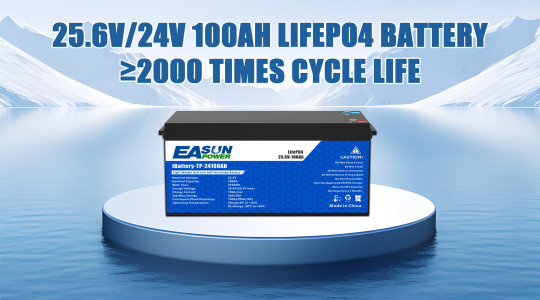
0 notes
Text
Knowing Substantial Voltage Solar Storage Batteries: The way forward for Renewable Strength
Because the thrust for renewable Electrical power carries on to improve, solar energy has emerged as a number one Alternative for equally household and professional Power wants. A critical ingredient of a powerful solar Electricity process will be the storage battery, which allows for the effective use of solar energy even if the Sunlight is just not shining. Amongst the different types of photo voltaic storage batteries accessible, substantial voltage photo voltaic storage batteries are gaining sizeable focus. This post explores what large voltage photo voltaic storage batteries are, their benefits, and why They're viewed as the future of renewable Strength storage.
What exactly are Superior Voltage Solar Storage Batteries?
Higher voltage solar storage batteries are designed to work at a higher voltage than conventional solar batteries. Commonly, these batteries work at voltages higher than 100V, generally starting from 200V to 500V or maybe more. They may be used to retail outlet the electrical Vitality generated by photo voltaic panels and launch it when essential, ensuring a regular and reputable power supply.
Critical Components of Substantial Voltage Solar Storage Devices
Battery Cells: The person cells that make up the battery, typically lithium-ion due to their substantial energy density and performance.
Battery Administration Process (BMS): Makes certain the Risk-free and productive Procedure with the battery by monitoring and running demand and discharge cycles.
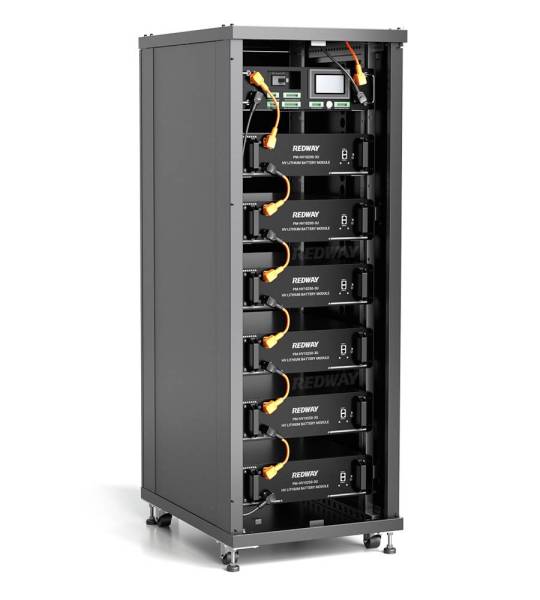
Inverter: Converts the DC electric power stored from the battery to AC electrical power to be used in residences and firms.
Charge Controller: Manages the facility coming through the photo voltaic panels to your battery, avoiding overcharging and optimizing performance.
Benefits of Significant Voltage Photo voltaic Storage Batteries
Elevated Efficiency: Large voltage batteries minimize The existing needed to supply the identical amount of ability, reducing energy decline on account of resistance and bettering Over-all system efficiency.
Scalability: These batteries can easily be scaled up to satisfy better Electricity calls for, creating them ideal for both residential and commercial applications.
Compact Structure: Significant voltage techniques typically need much less elements and connections, causing a far more compact and House-successful set up.
Improved Performance: Substantial voltage batteries usually give more rapidly charging and discharging premiums, offering a more responsive Strength storage Alternative.
Cost-Efficiency: Over time, the increased effectiveness and scalability may lead to Expense discounts in both installation and operational expenditures.
Apps of Large Voltage Photo voltaic Storage Batteries
Household Photo voltaic Systems: Homeowners can use large voltage batteries to retail store excessive photo voltaic Electricity generated throughout the day for use in the evening or during power outages.
Industrial and Industrial Amenities: Firms can leverage these batteries to handle Vitality fees, reduce dependence on the grid, and be certain a dependable energy offer.
Grid-Scale Vitality Storage: Utilities can use high voltage batteries to retail outlet huge quantities of photo voltaic energy, helping to stabilize the grid and combine more renewable Strength resources.
Challenges and Factors
While superior voltage solar storage batteries provide a lot of positive aspects, there are numerous issues and factors to keep in mind:
Security Concerns: Greater voltage methods can pose increased challenges, necessitating robust protection steps to circumvent shorter circuits, fires, along with other dangers.
Initial Charge: The upfront cost of superior voltage batteries and involved components may be greater when compared to lessen voltage devices, however very long-phrase financial savings typically offset this.
Servicing and Longevity: Guaranteeing the longevity and best performance of superior voltage batteries requires normal servicing and checking.
Long run Potential clients
The way forward for higher voltage solar storage batteries appears to be like promising, pushed by ongoing progress in battery technological innovation and escalating demand for renewable energy alternatives. Innovations like enhanced battery chemistries, enhanced BMS, plus more economical inverters are anticipated to further more Enhance the effectiveness and affordability of these units.
Governments and industries are ever more recognizing the value of Electrical power storage in reaching sustainability aims. Incentives and policies targeted at advertising the adoption of significant voltage solar storage methods are likely to spur additional advancement With this sector.
Conclusion
Substantial voltage solar storage batteries characterize a big step forward in energy storage technological know-how. Their capability to supply improved performance, scalability, and functionality makes them an excellent choice for a wide array of purposes, from household to grid-scale energy storage. As technological innovation continues to evolve, these batteries will Participate in a vital role from the transition to a more sustainable and resilient Power foreseeable future. Irrespective of whether you are a homeowner aiming to enhance your solar power use or a business aiming to scale back Strength charges, substantial voltage solar storage batteries offer a powerful Resolution on your Vitality storage needs.
Learn more info. check out here: What are high voltage solar storage batteries?
0 notes
Text
Tesla Powerwall 3 Battery Review
Whether you have solar panels or not, the Tesla Powerwall 3 battery is an excellent option for home energy storage. It has a 13.5 kWh energy capacity and a built-in solar inverter with an unlimited number of cycles.
It also has one of the best warranties in the industry. This gives homeowners peace of mind knowing their investment is protected.
Reliability
The Tesla Powerwall 3 battery is a lithium-ion battery that stores excess solar energy, providing a sustainable and reliable power source at night or in case of a grid outage. It also optimises the use of solar and cheap grid energy by prioritising charging during high demand times and reducing charges during off-peak hours.

It offers a 13.5 kWh energy capacity, which is enough to run small appliances, or even whole-home backup systems. However, larger electrical loads such as air conditioners may require more than one Powerwall.
The Powerwall 3 has a long lifespan and a warranty that covers 6,000 cycles, which is significantly more than most batteries offer. It also uses a simpler cooling system compared to previous versions, making it more affordable. This is partly due to the use of new LFP cells, which are safer and don’t contain cobalt.
Efficiency
The Powerwall 3 has an impressive peak power output and round-trip efficiency. Peak power output measures how much power a battery can deliver for a brief burst and is important for appliances that require a quick surge of energy, such as your air conditioner’s compressor.
The round-trip efficiency of a Powerwall is the amount of usable capacity that remains after all the energy losses associated with charging and discharging. This high efficiency is key to maximizing solar energy production and reducing home energy consumption.
With the ability to track energy usage through the Tesla app, you can customize the performance mode of your Powerwall storage system to meet your energy goals. You can even choose to prioritize the backup function for use during severe weather events.
Flexibility
Powerwall 3 has the flexibility to provide backup power and energy independence for your home. It can also be used to reduce your reliance on the grid and save on utility bills. It also features 24/7 app-based monitoring and can be customized to meet your needs.
Unlike the previous generation, Powerwall 3 has a simple cooling system that does not require any liquid thermal management. It uses natural airflow to cool the inverter. It also has an advanced inverter integration that allows homeowners to monitor and adjust their energy usage.
Another great feature of the Powerwall 3 is its unlimited-cycle warranty. This is a major advantage over other battery storage systems, which usually have limited cycle warranties. This makes the Powerwall 3 the best choice for your solar energy needs.
Installation options
Powerwall 3 is a great option for whole-home backup, providing energy independence and reducing utility bills. It’s compatible with solar systems and comes with a 10-year warranty.
It’s easy to install and integrates seamlessly with your existing solar system. The integrated inverter converts DC energy from the battery into AC electricity to power your home. This process saves energy compared to previous Powerwall models that used separate inverters.
The Powerwall 3 is also a reliable storage solution during an outage, as it can disconnect from the grid in less than a second. It also features a liquid thermal control system, independent fuses, and touch-safe technology. The battery can be monitored remotely through the Tesla app and customized to your energy goals. The battery uses LFP lithium-ion batteries, which last up to ten years with a high rate of capacity retention.
Warranty
Like most quality solar, the Tesla Powerwall 3 is backed by a 10-year product warranty. This covers any physical defects in the system that occur over time, as well as repairs and replacements if needed.
Many battery companies have cycle limits, which limit how much energy they expect their batteries to be able to deliver over time. These limits can impact your solar battery’s functionality, especially if you’re using it for backup purposes or timebased control.
However, Tesla does not include a cycle limit in its Powerwall 3. As such, this model has an edge over most other battery storage options on the market. It also includes an integrated inverter, which reduces installation costs by eliminating the need for a separate inverter. Additionally, it offers 24/7 app-based monitoring.
0 notes
Text
Elevate Battery Safety with DALY Smart BMS 7S 24V 80A Lithium-ion Battery Protection Module
In the realm of lithium-ion battery systems, ensuring safety and efficiency is paramount. Introducing the DALY Smart BMS 7S 24V 80A Lithium-ion Battery Protection Module, a cutting-edge solution designed to safeguard your battery pack while optimizing performance. Join us as we delve into the features, benefits, and applications of this advanced battery management system.
Understanding DALY Smart BMS 7S 24V 80A
The DALY Smart BMS 7S 24V 80A is a state-of-the-art battery protection module engineered to provide comprehensive protection and management for lithium-ion battery packs. With its intelligent features and robust design, this BMS offers unparalleled safety against overcharge, over-discharge, overcurrent, short circuit, and temperature fluctuations.
Key Features:
Enhanced Protection: The BMS employs multiple layers of protection mechanisms, including voltage balancing and temperature monitoring, to ensure the safety and longevity of your battery system.
High Current Handling: With a maximum continuous discharge current of 80A, the DALY Smart BMS is suitable for a wide range of applications, from electric vehicles to solar energy storage systems.
Smart Functionality: Equipped with a built-in Bluetooth module, users can conveniently monitor and manage their battery system in real-time via a smartphone app, receiving alerts and accessing crucial data with ease.
Efficient Cooling: Designed with efficient thermal management capabilities, the BMS dissipates heat effectively, maintaining stable operation even under demanding conditions.
Compact and Durable: Despite its compact size, the DALY Smart BMS boasts a durable construction, ensuring reliability and longevity in various environments and applications.
Applications:
Electric Vehicles: Ensure the safety and performance of electric cars, buses, and scooters with the DALY Smart BMS.
Renewable Energy Systems: Optimize the efficiency of solar energy storage systems, off-grid installations, and home battery backups.
Industrial Applications: Enhance the reliability and safety of industrial battery packs used in forklifts, power tools, and machinery.
Marine and RV Power Systems: Safeguard marine batteries and RV power systems for seamless adventures on land and sea.
Why Choose DALY Smart BMS 7S 24V 80A?
Unmatched Safety: With its advanced protection features, the DALY Smart BMS offers unparalleled safety, minimizing the risk of damage or accidents.
Optimized Performance: Maintain optimal battery health and performance for extended cycles, ensuring maximum efficiency and longevity.
User-Friendly Interface: Access vital battery information and control settings conveniently via the intuitive smartphone app, empowering users to make informed decisions.
Versatile Compatibility: Compatible with various lithium-ion battery chemistries and configurations, the BMS offers flexibility for diverse applications.
Peace of Mind: Trust in the reliability and quality of DALY Smart BMS, backed by a reputation for excellence in battery management technology.
Conclusion
When it comes to battery management and safety, the DALY Smart BMS 7S 24V 80A Lithium-ion Battery Protection Module stands out as a top choice for discerning users. Whether you're powering electric vehicles, renewable energy systems, or industrial equipment, investing in quality BMS technology is essential for maximizing performance and ensuring peace of mind. Choose DALY Smart BMS for the ultimate combination of safety, efficiency, and convenience in battery management.
For more details
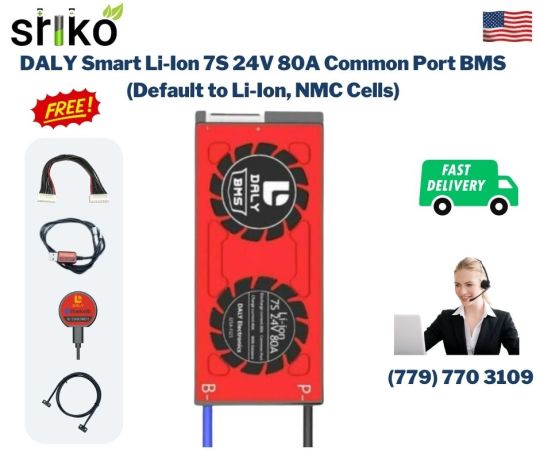
0 notes